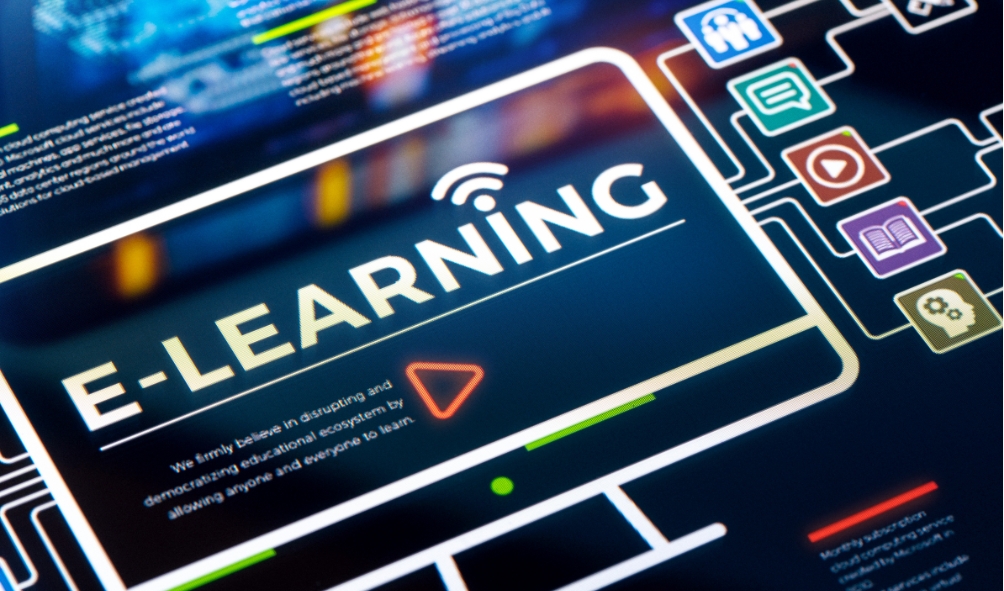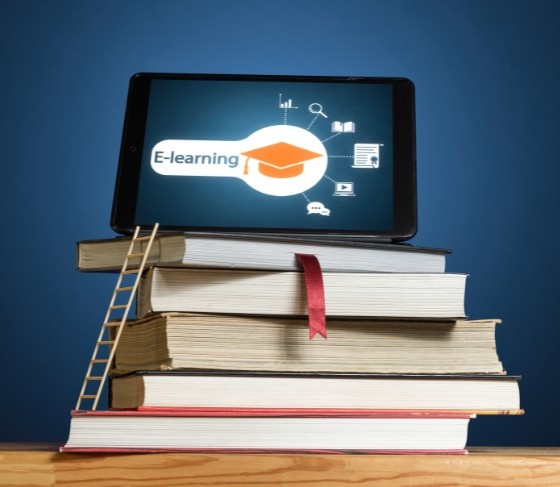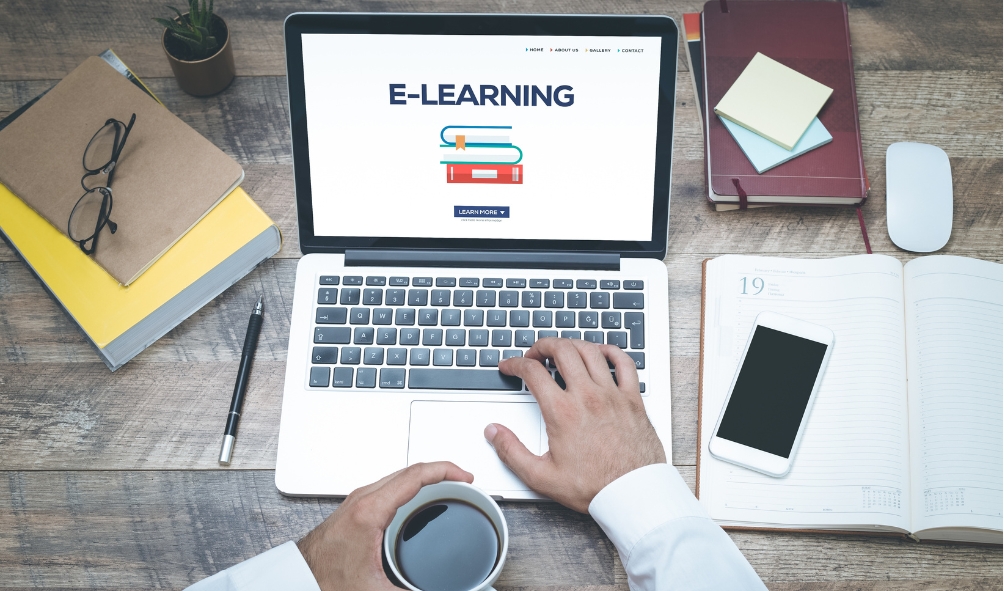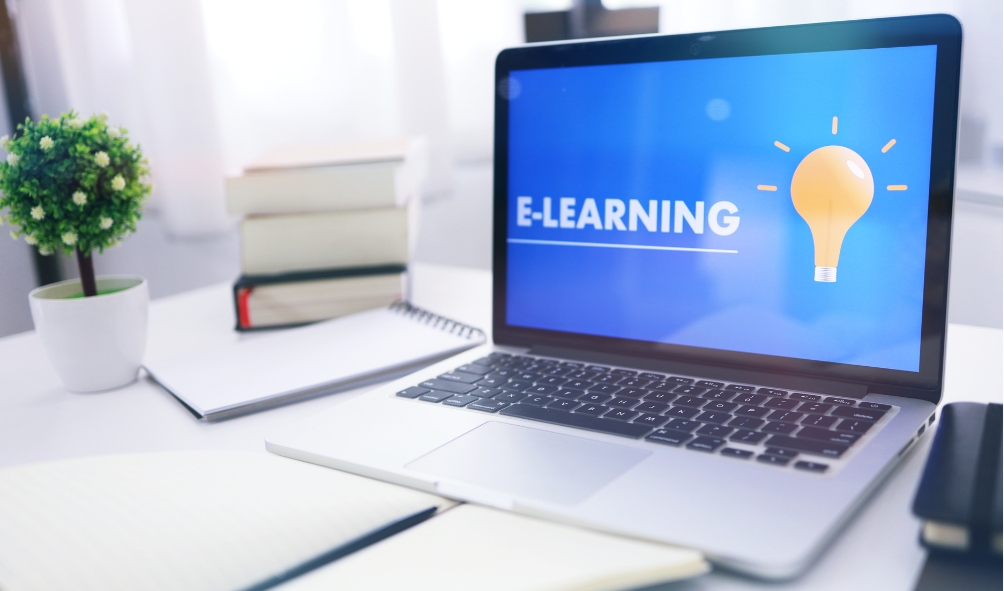The Internet has been a game-changing technology that has revolutionised the way we learn. With its affordability, flexibility and personalized nature, education is now more accessible than ever before. However, it is important to understand how the Internet continues to evolve education today and in the future. This guide aims to clarify the role of the Internet in the new world of education by outlining its advantages and disadvantages, as well as expected trends for the future.

Evolution of the Internet in Education
Early Adoption of the Internet in Educational Institutions
This educational use of the Internet started with the early adoption of the Internet in teaching and learning. At this stage, the Internet was used in addition to the sources available in teaching and learning, with the main purpose of providing learners with a wider variety of information and learning materials. Consequently, the Internet became an additional source of research among universities and schools. This phase was characterised by limited use of information and communication technologies such as email communication.
Development of Online Learning Platforms
This technology and the Internet also began to find educational applications. Online learning tools started to appear: applications like Blackboard and Moodle, which provided structured learning environments where educators could upload resources, set tests, and communicate with learners. As these platforms developed, existing courses and materials could be adapted into online environments. Students could access their learning materials 24 hours a day, seven days a week, and from any location. The flexibility of online platforms opened the door to more innovative approaches to learning.
Growth of E-Learning and Digital Classrooms
One of the most considerable marks on the education Internet is the rise of e-learning and virtual classrooms. With the availability of high-speed Internet and advanced technology, virtual classrooms have become a reality. Video conferencing tools such as Zoom or Microsoft Teams simulate real-time interaction between students and teachers. E-learning has opened the door for everyone to explore courses from elite institutions worldwide. Such growth contributes to the inclusivity and adaptability of education to modern learners.
Accessibility and Inclusivity
Expanding Access to Education Through the Internet
With the spread of the Internet, access to education has increased tremendously. Previously, access to education depended on one’s location and physical infrastructure. Nowadays, individuals living in rural or remote areas can also access the same level of education as those living in large urban cities. There is no foundation for anyone who has an internet connection to access online courses or resources. The Internet has reduced barriers to education and allowed people to continue learning throughout their lives.
Bridging the Gap for Remote and Underserved Communities
As dramatic as it may sound, one of the highest returns to the Internet is reducing the educational divide for the most remote regions in the world. Initiatives such as One Laptop per Child and other governmental programmes aim to provide internet access and digital devices to students who would otherwise be unavailable. Providing students with the digital tools to learn and connect will help to bring back the educational divide by levelling the playing field for all.
Role of Affordable Devices and Internet Connectivity
However, the main factors in maximising the advantages of internet-based education are the availability of affordable devices and a stable internet connection. Smartphones and tablets have become relatively affordable to use, especially for digital education. In addition, low-cost laptops also give students an opportunity to access educational content. Improving the internet infrastructure is absolutely crucial in supporting online education. It is no secret that internet connection in many countries, such as Cambodia, is quite expensive, especially for low-income families with children. Thus, the government needs to provide affordable connectivity for students who are engaging in online education. As these technologies become more ubiquitous, more students will be able to benefit from internet-based education.
Online Learning Platforms and Resources
Overview of Popular Online Learning Platforms
Online learning has become an alternative way of accessing education. Coursera, edX, and Khan Academy are some of the platforms that provide a range of courses from leading universities and institutions worldwide. These platforms can be accessed from any location to suit students’ learning purposes and pace.
The courses cover a wide range of subjects, including computer science, business, arts, and humanities, to cater to a large audience with different learning interests and career objectives.
Availability of Massive Open Online Courses (MOOCs)
With the advent of Massive Open Online Courses (MOOCs), the trend towards democratisation has taken another step forward. People can now learn from leading institutions such as Harvard, MIT and Stanford by simply connecting to the Internet. MOOCs are free or available at a low cost and provide an immersive learning experience comprising a series of video lectures, interactive quizzes and peer-reviewed assignments. Upon completion, participants receive a certificate, which not only adds value to their curriculum vitae but also to their professional development.
Digital Libraries and Open Educational Resources (OERs)
Digital libraries and Open Educational Resources (OERs), for example, are two of the most useful domains in the field of online education. Digital libraries include collections of academic papers, research articles, and books such as JSTOR and Google Scholar, which enable students and researchers to support their studies and research. OERs, on the other hand, include open-access teaching and learning resources such as textbooks, lecture notes and multimedia content that are freely available and encourage knowledge sharing and collaboration among educators and learners.

Personalised Learning Experiences
Adaptive Learning Technologies
Adaptive learning technologies are set to change education in fundamental ways, tracking how individual students learn and adapting instruction accordingly. Using algorithms and data analytics, software platforms like DreamBox and Knewton analyse a student’s interaction with the material and identify where the student is, strong and weak, before deciding how to adjust content and pace. In this way, learning becomes more efficient as it is shaped for each student.
Data-Driven Personalized Education Plans
One result of education’s obsession with data is personalised, personalised education plans for each student. Data from assessments, assignments, and other learning activities can be used to build learning plans that identify which learning gaps need attention, what needs to be more enriched, and which pedagogical strategies best fit a particular learner’s style. Thus, the educational experience becomes more interesting and dynamic.
Benefits of Personalised Learning for Student Engagement and Success
Personalised learning has many advantages for student engagement, efficacy and achievement. Students who receive instruction that meets their needs are more likely to stay engaged and motivated. This type of learning reduces frustration and boredom because students are neither overwhelmed nor underwhelmed by the material. Personalised learning can also improve achievement because students are more likely to master the material at their own pace and receive extra help when they need it.
Collaborative Learning and Social Interaction
Online Discussion Forums and Study Groups
The Internet has radically changed collaborative learning with the creation of online forums and discussion groups for students. Piazza, for instance, is a website that allows students to discuss their course materials, pose questions and share resources. Reddit’s education communities are another example of online forums where students can study together and learn from each other. These forums create a community for students to support one another and gain new perspectives on their studies.
Virtual Classrooms and Video Conferencing Tools
Virtual classrooms and video conferencing tools such as Zoom, Microsoft Teams, and Google Meet are used to provide real-time communication between students and teachers, allowing for live lectures, group discussions, and other interactive sessions. The virtual classroom can bring the traditional classroom experience onto a computer screen and allow for communication to take place very quickly while at the same time allowing for flexibility in the schedules of both students and teachers.
Role of Social Media in Educational Collaboration
Sites like Facebook, Twitter, LinkedIn, and other platforms present physical spaces for the creation of educational networks and collaboration. On these sites, students and teachers can connect, share ideas, and work on different projects. Educational hashtags, groups and pages are also created in order to connect learners who are all interested in the same subject matter or course, allowing for the establishment of a learning community. Some of these sites also provide networking opportunities and allow learners to interact with other professionals and peers worldwide.

Interactive and Immersive Learning
Gamification in Education
Gamification is the process of introducing game elements (such as leaderboards, challenges, and competition) to a non-game context to increase engagement and motivation. Kahoot! and Duolingo, to name just two examples, are educational platforms that use gamification to try and make learning more fun and interactive. Their primary goal is to provide learning experiences that are engaging and motivating for their users. Gamification has been successfully implemented in many contexts, such as employee training, skill development, and customer engagement.
Virtual Reality (VR) and Augmented Reality (AR) in the Classroom
Virtual Reality (VR) and Augmented Reality (AR) are changing education. With the help of VR and AR, students can learn and experience by being inside virtual environments, exploring historical sites, scientific simulations, and other subjects. In AR, digital information is overlaid in the real world, creating interactive and hands-on experiences with educational content. Google Expeditions and Nearpod are examples of VR and AR platforms that provide lessons for students and teachers to explore the world in 3D.
Simulations and Interactive Content for Hands-On Learning
Simulations and other interactive content also allow students to practice their learning: tools such as PhET Interactive Simulations and Labster offer virtual labs and experiments where students can experiment with concepts in a safe and risk-free environment. With interactive simulations, students are able to manipulate the variables to see the outcomes, helping to scaffold their learning experience. These tools are especially helpful for subjects that require real-world applications, such as science, engineering and medicine.
Teacher and Student Roles in Online Education
Shifting Roles of Teachers as Facilitators and Mentors
With the teacher’s emergence as a facilitator or mentor, simply delivering content is not enough; active involvement in the student’s learning journey is required. This allows teachers to focus on the needs of individual students, helping them become master learners. Facilitating discussions, encouraging critical thinking, providing resources, and giving feedback are some of the ways in which teachers promote independent learning.
Empowering Students to Take Ownership of Their Learning
A key feature of online education is that it helps students take more ownership of their education. By offering different sources of materials and flexible schedules, students have more choices about what they will study and when. This allows them to develop self-discipline and self-motivation while also developing the ability to plan their studies. These skills provide students with lifelong learning habits, which are essential for success in further education and employment.
Importance of Teacher Training and Professional Development in Digital Education
To ensure that teachers are able to keep up with the changing digital education landscape, they must receive ongoing professional development and training. Teachers must become adept at using online tools, developing interesting digital content and applying best practices for digital instruction. Professional development programs that aim to teach digital pedagogy, technology integration and data-driven teaching, among others, provide teachers with the skills necessary to create engaging and effective online learning environments. Ongoing learning and adaptation are necessary if teachers are to meet the evolving needs of their students.
Challenges and Considerations
Digital Divide and Ensuring Equitable Access
The first of these challenges is the digital divide or the gap between those with access to technology and the Internet and those without. Digital equity means addressing gaps in access to technology and to the Internet. This could mean providing affordable technology to students, subsidising internet costs for students and their families, and/or providing community access points.
Maintaining Academic Integrity in Online Assessments
Related to this is the question of academic integrity in online assessments. Following the shift to remote learning, the risk of cheating and plagiarism has magnified in online education. There are a few ways to tackle this issue, including through the use of plagiarism-checking software, proctoring services, and designing assessments that require critical thinking and application instead of rote memorisation. Additionally, it can be helpful to explicitly communicate academic integrity policies to students and to foster a culture of honesty to encourage students to act with integrity.
Balancing Screen Time and Digital Well-Being
When students spend too much time on screens, their physical and mental health is affected. Simply studying on the computer can affect the balance between online learning and physical and mental health. Therefore, the author suggests breaking away from the screen, exercising more, and even engaging in offline learning activities to offset the negative effects of excessive screen time. Educators and parents should work together to develop balanced schedules to promote academic success and overall well-being.
Addressing Privacy and Data Security Concerns
As online use is increasing day by day, it is important to ensure the privacy and security of data. All of the students’ personalised information must be protected from unauthorised access. Educational institutions must ensure that they comply with data protection regulations and maintain all their infrastructure to match international standards. All the possible security measures must be used to protect the students’ data, and the teachers and students should be well-educated about online privacy and safe practices.
Future Trends and Innovations

Artificial Intelligence (AI) in Education
Currently, the field of Artificial Intelligence (AI) appears to be one of the most likely to reshape education. AI technology will allow for the personalisation of learning, automation of tasks such as administrative duties, and advanced data analytics. AI-powered learning is able to identify the needs of the student and provide the most appropriate piece of content. Chatbots and virtual assistants can become personal guides to students and answer their questions at any time of day. The potential of AI to improve learning and transform educational processes definitely makes it a trend to watch for in the future of education.
Blockchain for Credentialing and Secure Records
Blockchain technology could also be a solution for managing educational credentials and records: its immutable records of educational achievement are immune to modification, meaning that they cannot be falsified. The technology also makes it simpler for employers and institutions to verify credentials, in turn making it easier for them to verify such data. Blockchain’s potential to provide a decentralised and secure educational data system could revolutionise how we manage our academic data.
Lifelong Learning and Continuous Education Models
The future of education is becoming more about lifelong learning and continuous education. Given the dynamic nature of industries, many of which require new skills as they transform, people need to constantly update their knowledge and competencies. Online learning opportunities and flexible learning formats allow for on-demand access to education, enabling individuals to easily acquire specific knowledge and skills as needed. Courses such as micro-credentials, certifications and modular training aid a culture of continual professional and personal development.
Future Predictions for the Evolution of Internet-Based Education
We can expect more seamless integration of advanced technologies, greater customisation, and a more diverse, flexible, and inclusive range of educational offerings. Greater use of virtual and augmented reality will support immersive and interactive learning experiences. Future directions will be shaped by close collaboration between education institutions, technology providers, and policymakers. As these developments unfold, the Internet will play an increasingly important role in shaping the future of learning.
Conclusion
The Internet has revolutionised education by making it more accessible, personal and interactive. The way education is completed has changed, and it will be important to our future education success that we embrace these changes. As education changes in the digital age, it is important to consider internet technologies to maintain dynamic and inclusive learning environments that cater to the needs of all students.
